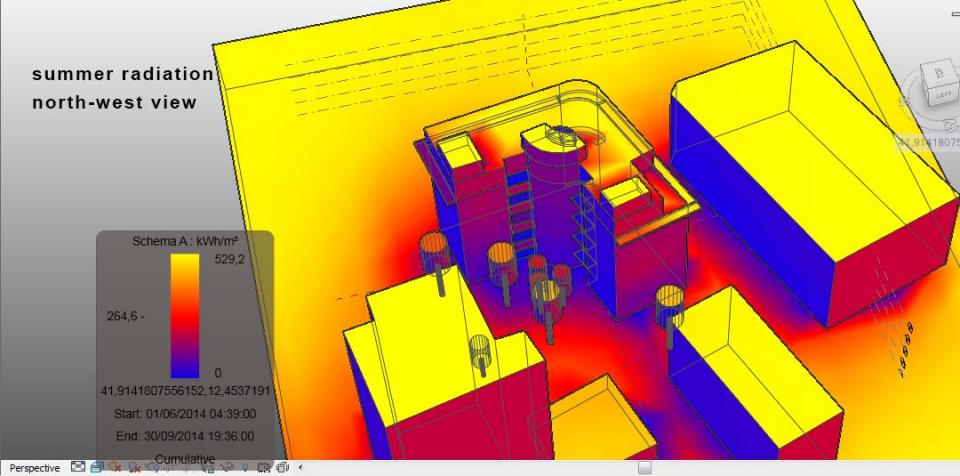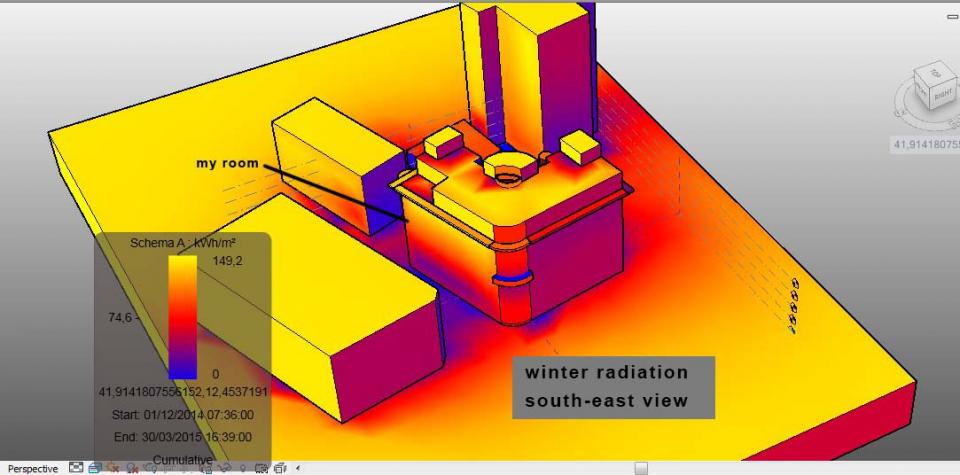Tu sei qui
Solar radiation @ via della Giuliana, Quartiere Vittoria, Rome_ Chapter 2_Nicolò Santini
Time has come to get to a deeper layer of analysis. Vasari gives us the possibility of checking out the consequences of solar radiation on solid masses, throughout a variably long time (i.e. a season).
To do so, I first needed to add a few details to my building’s volume, in order to get a result closer to reality. I’ve built the ledge directly drawing its shape on the façades and extruding them (“Set” – “Pick a Plane” – “Create Mass”. ). I’ve also created brand new masses for the balconies and the rooftop volumes, and the trees as well (I’ve also wanted to focus on the garden this time).
I’ve opened the “Analyze” menu and clicked on the “Solar Radiation” button. I’ve selected the masses to analyze (“Arrow” button) and then set the time period (“…” button, that allows all the time settings). I’ve also made sure that the “Cumulative” and “kWh/mq” options were selected, and then I’ve clicked on “Analyze”. I’ve repeated the operation for both summer and winter.
This is what I got.




ATOMIC CLADDING
As also noticed on the previous post, the stucco cladding seems to be the one that feels solar radiation the most. Looking at the south façade, you can see “shadows” – darker colour shadings –left by objects that aren’t there anymore.

TOUGH PLANTS
As Vasari shows, the condo’s garden on the north has different radiation areas; yet there’s no notable difference in the growth of grass on the ground, neither the taller plants seem to care – no matter if they’re pines on palms. The difference can be FELT, as there is a difference of a couple of degrees between the two ends of the garden.

A STRATEGIC SPOT
I already knew that my room (3rd floor, south-western exposition) was the best in the flat. Vasari did confirm it. Not too sunny in summer, reasonably irradiated during cold months. I have sunlight from dawn to dusk, yet I’m not feeling any hot during the warm season.

